Australian Tropical Rainforest Plants - Online edition
Athertonia diversifolia (C.T.White) L.A.S.Johnson & B.G.Briggs
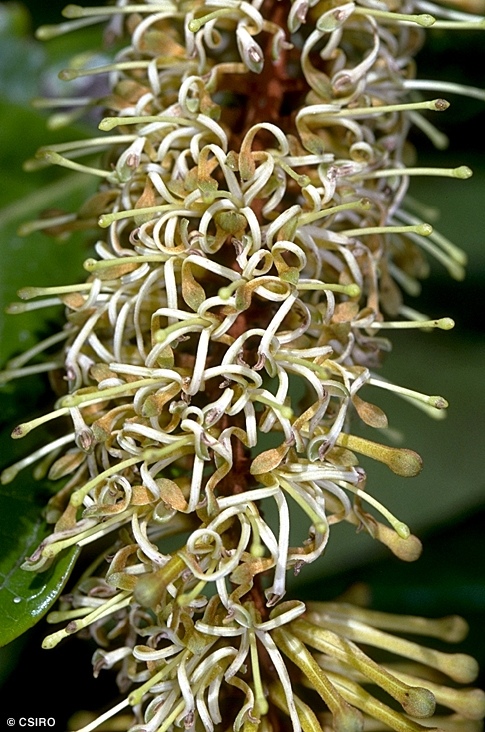

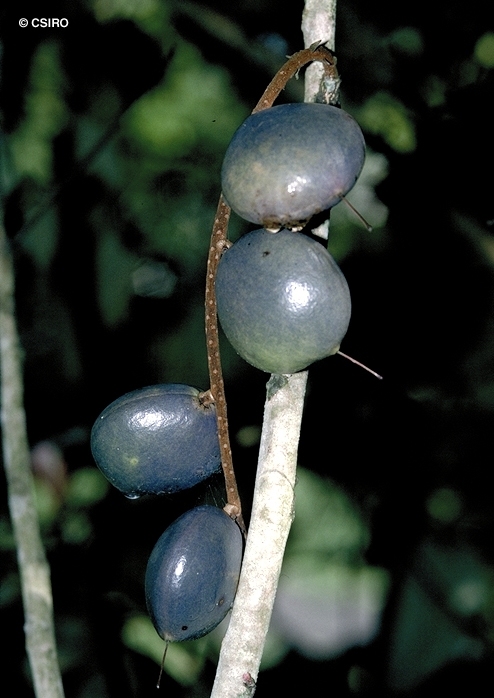
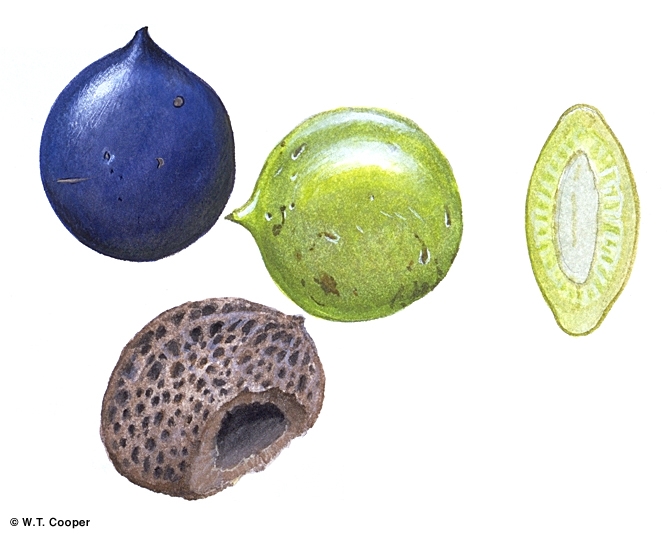

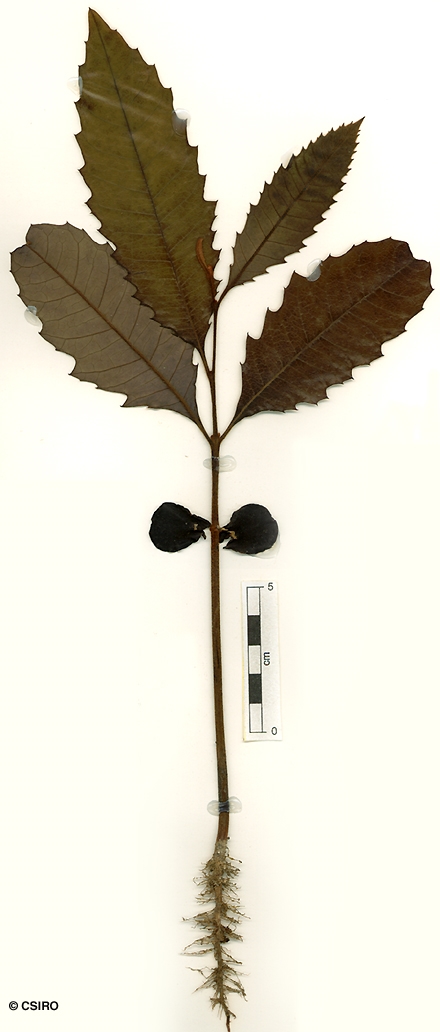
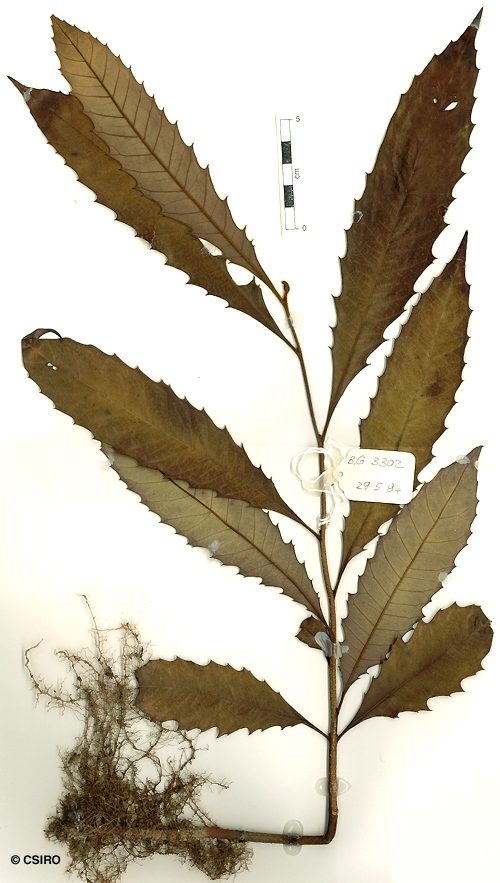
Johnson, L.A.S. & Briggs, B.G. (1975) Botanical Journal of the Linnean Society 70(2): 176.
Atherton Oak; Oak, Atherton; Oak, Cream Silky; Creamy Silky Oak; Athertonia; Cream Silky Oak
Oak grain in the wood and a similar pattern in the inner blaze. Stem generally fluted.
Oak grain in the twigs. Young shoots densely clothed in rusty brown hairs. Leaves variable in shape, leaf blades about 10-27 x 3.5-13 cm, teeth, if present, stiff and sharp. Midrib raised on the upper surface. Fallen leaves on the forest floor turn black upon drying.
Flowers paired, common peduncle about 1-2 mm long. Tepals about 19-23 mm long. Hypogynous glands four per flower. Ovules 2.
Cotyledons broadly obovate, about 13-20 x 18 mm without any obvious venation. First pair of leaves coarsely toothed. At the tenth leaf stage: leaf blade elliptic to oblanceolate, margin conspicuously toothed, hairy on both the upper and lower surfaces at least when young; terminal bud densely clothed in ferruginous hairs. Seed germination time 53 to 72 days.
Endemic to NEQ, restricted to the Mt Spurgeon-Mt Lewis area, the Gadgarra-Boonjee area on the western side of Mt Bartle Frere and the Cape Tribulation-Mt Sorrow area. Altitudinal range from near sea level to 1200 m. Usually grows in well developed upland and mountain rain forest on a variety of sites.
The seeds of this species are occasionally eaten by people in North East Queensland. It is very difficult to find whole seeds on or under the trees growing in rainforest as the rats seem to get every seed while still attached to the tree and only drop the empty shells to the ground. Caution should be exercised and any seeds with the flavour or odour of bitter almonds should be completely avoided.
Fruit is eaten by Musky Rat-kangaroos and native rats. Cooper & Cooper (1994).
Now widely cultivated, this tree produces a spreading dense crown of large lobed leaves giving excellent shade. Flowers are in long pendant racemes, emit a sweet odour in the early evening and produce large blue edible fruits.





